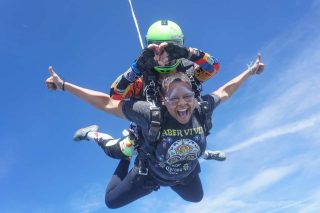What to Expect on Your First Solo Skydive
General
2 months ago
Sometimes people land from their tandem jump and decide that life is better while soaring through the great, blue sky – inspiring them to dive into the solo skydiving world. But what is it like once you are up there all on your lonesome? Does the question ‘how do I prepare for my first skydive?’ leave you feeling AHHH!? Deep breaths. We know how daunting committing to the big solo jump can be, and we don’t want you to fall into intimidation paralysis, so keep reading! We’re going to take you through every single step of the ‘how to skydive solo’ journey in this comprehensive guide.
Is Your First Time Totally Alone?
How do I skydive solo when I don’t even know what the heck I’m doing!? Calm down, young fledgling – you’re not up there all on your own on your very first ‘solo’ parachute jump! The Accelerated Freefall Program (AFF) is designed to teach novices how to skydive with dual instructors – one on either side of the student in freefall. AFF is the most effective training methodology in the world to teach people how to confidently skydive solo!
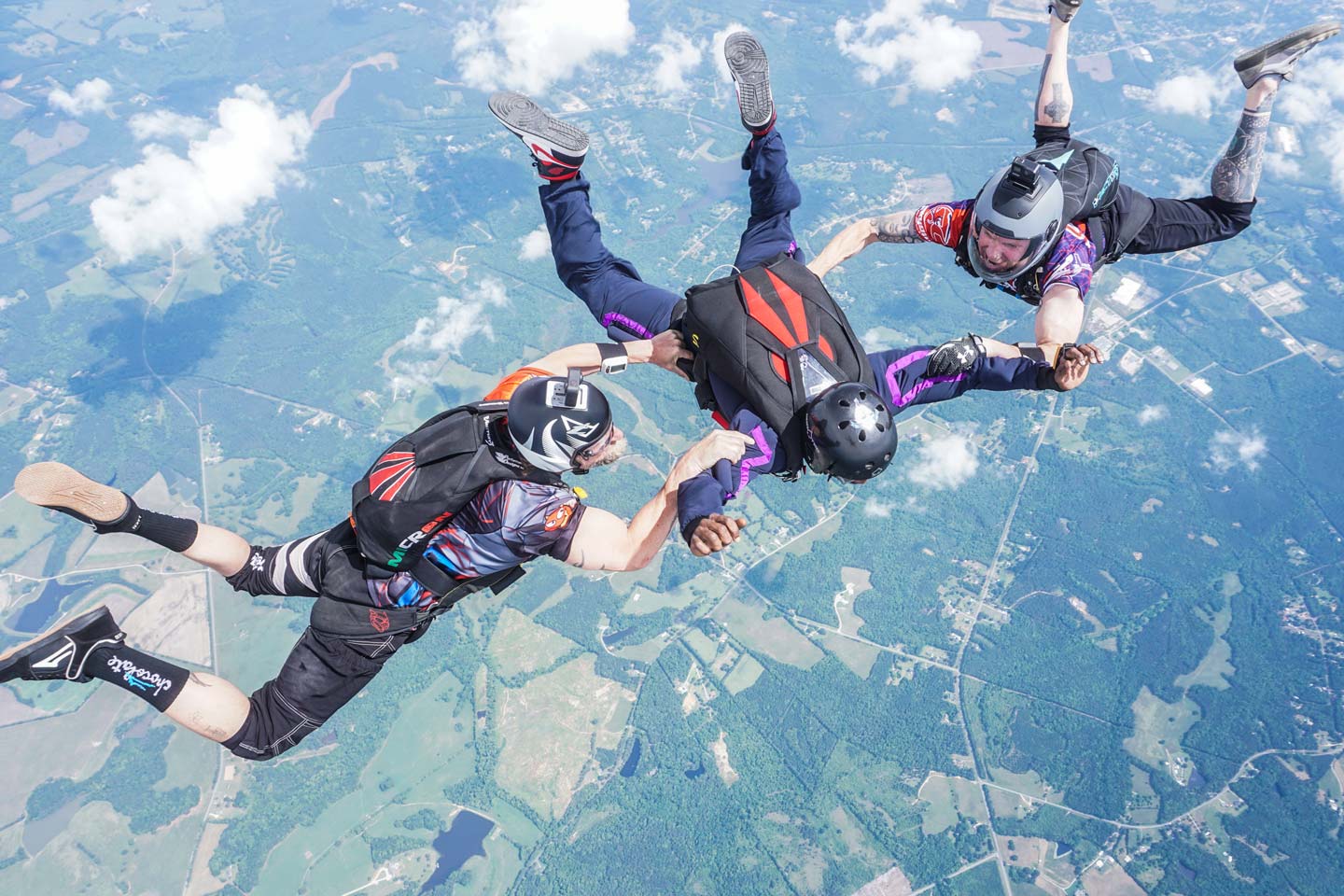
Solo Skydiving: Each Step Broken Down
Let’s look at what you can expect on the ground, in the air, and after you land. We’d like to note that each dropzone may vary slightly depending on their protocols and instruction styles.
FJC
First things first, you walk into the best place on earth: the dropzone. Then, you’ll scoot your boot into a classroom. The very first step of your jumping journey is to enroll in a First Jump Course (FJC), which is taught on the ground in a classroom setting and is followed by your first jump!
This first jump (and subsequent jumps in your AFF progression) will consist of the following, first with two instructors and eventually one instructor.
EPs
Going over emergency procedures is a critical step prior to any skydive. You’ll learn these extensively in your FJC and they will be reiterated throughout your entire student progression – from how to safely exit the aircraft in the event of an emergency to addressing a parachute malfunction.
Gear
Your instructor(s) will assist you in finding the proper gear, although you may be responsible for renting your altimeter, helmet, and jumpsuit. Main parachutes are all different sizes and styles, so it’s important to do some math to determine the best solo parachute size for your first jump, which is where your instructor comes in.
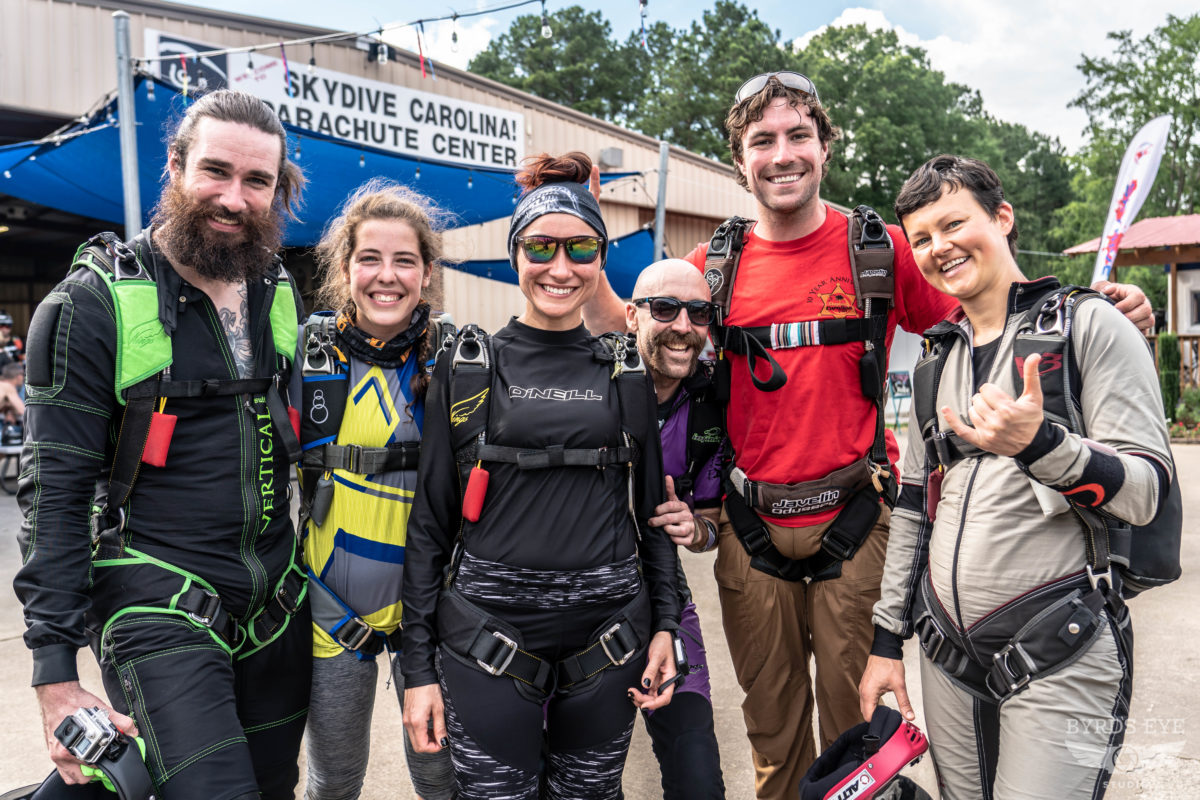
Manifest
No, no, we’re not talking about sending a bunch of positive vibes to the universe with hopes of something happening in your favor. We’re referring to getting your name on the list for the plane load! Your instructor(s) may manifest you themselves, and later in your progression, this step will most likely be your responsibility. Your job is to inform manifest of who you are jumping with, which load you all would like to be on, and what you’ll be doing on the jump (i.e. what AFF level or category you’re on).
Gear checks
Getting multiple gear checks is undoubtedly the most important part of your pre-jump tasks! Ensuring your gear is assembled correctly and your Automatic Activation Device (AAD) is turned on are essential gear checks. What happens if you pass out while skydiving solo? The AAD – a small computer designed to deploy the reserve parachute if the skydiver is unable to do so – will come into play. AAD’s save lives!
Pre-jump brief
This is the perfect time to ask any questions and let your instructor(s) know of any concerns! The plane is tight, loud, and has a time constraint – AKA, the clock is ticking until exit. Although questions are still encouraged, they’re easier to answer on the ground. The pre-jump review will usually consist of reviewing the dive flow (the plan for the skydive) and mimicking it in a mock-up – a makeshift door of the aircraft that lives on the ground.
Load
Alright, we’re getting close. This is when your final gear check prior to loading onto the plane will take place. Your instructor(s) will ensure you’re ready to go physically and mentally.
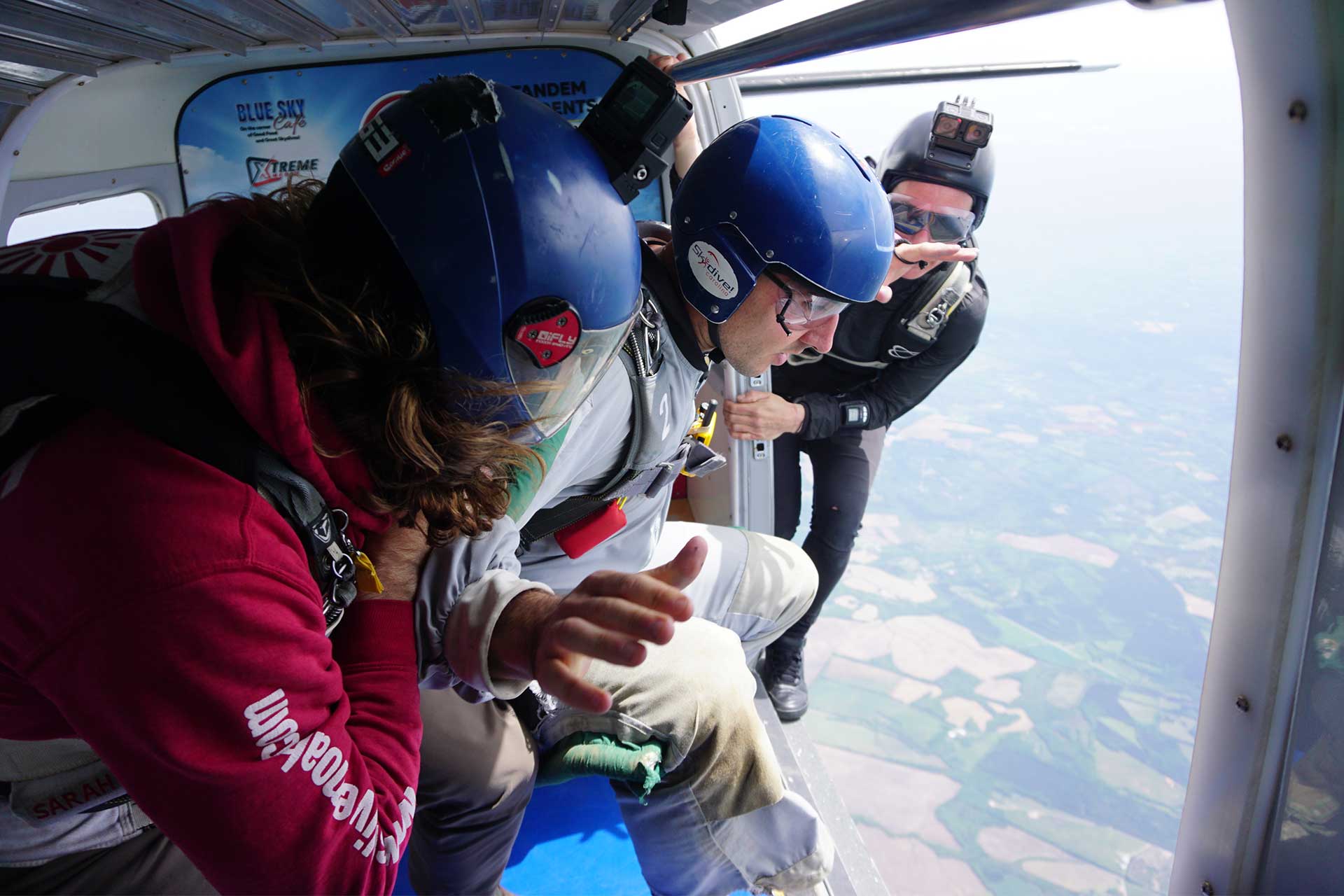
Ascend to altitude
In the plane, your instructor(s) will buckle and unbuckle your seatbelt, do another gear check, point out landmarks, and review the dive flow with you again. To ensure you have a good grasp on the plan for the jump, they will most likely request that you verbalize it back to them. Lastly, they will ask if you’re ready to skydive – if you answer affirmatively, it’s go-time!
Exit
Once the door opens, your body will realize you’re about to jump from an airplane. AFF student skydivers will typically exit after licensed jumpers and before tandem skydivers – you’ll be right in the middle. Deep and controlled breathing is your best friend during the ascent and especially when the door opens. Your instructor(s) will inform you that it is time to approach the door and take position for exit – this will be the same exit you reviewed multiple times in the FJC and pre-jump brief.
Freefall
Wow – you’re in the sky. Chances are, your heart will be going a million beats a minute, but you’ve trained for this and you’ve got this! Your instructor(s) will be holding onto either side of you, will be giving your hand signals (that you will learn in the FJC), and will be making eye contact with you – this all keeps you in the moment. It’s important to maintain your Circle of Awareness; be aware of what’s going on and what altitude you’re at.
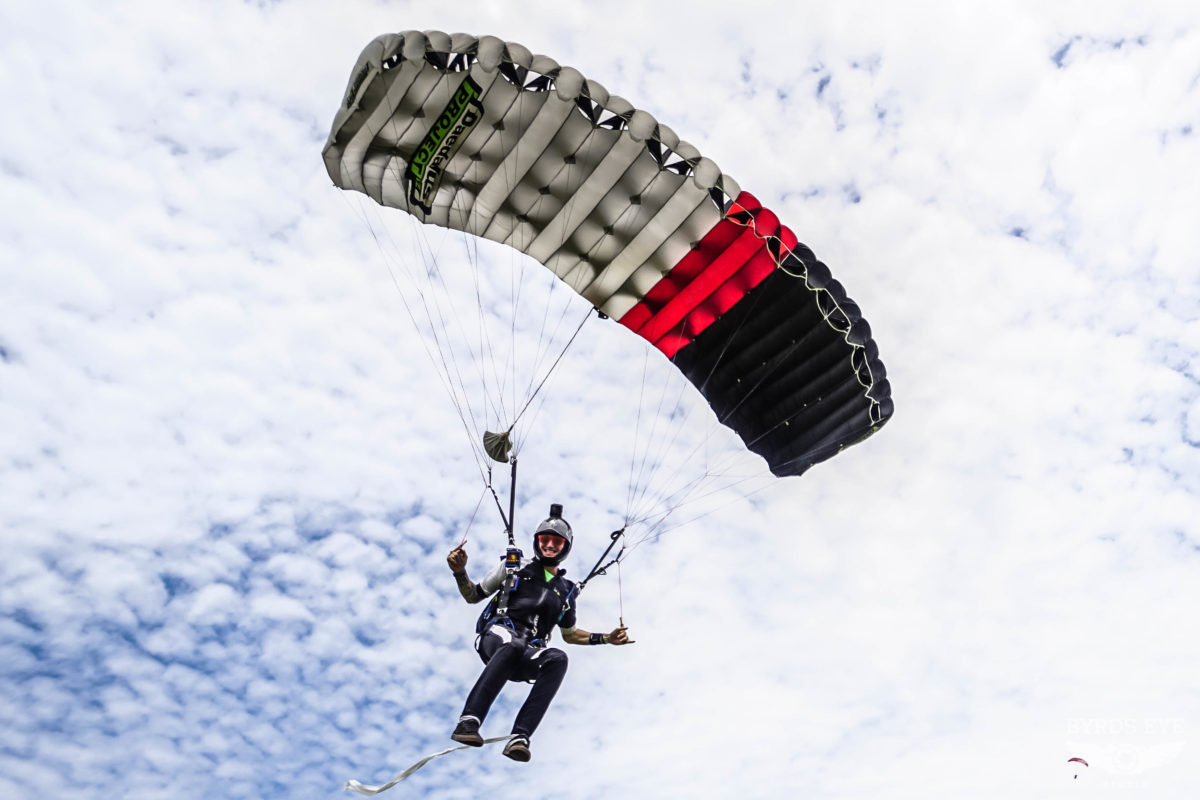
Canopy flight
YOU DID IT. Soak it in. Under the parachute, you’ll do a controllability check and fly to the holding area, just like you learned in the FJC. Having your head on a swivel and accounting for other skydivers is critical while under canopy!
- What is a controllability check? This is the procedure of making sure your canopy is flying properly. The Three S’s are used to check if the canopy is landable or if initiating emergency procedures is necessary. First ask, is the canopy there? Then, is it square? Is it stable? Is it steerable?
Land
Flare, flare, flare! Once you land, you’ll gather your gear in the way you were taught, your instructor(s) will walk back into the packing area with you where you will lay your gear down for a packer. Remember: be nice to your packer!
Debrief
At Skydive Carolina, our instructor(s) will record your jump and use this footage as part of the debrief. Debriefing is the process of going through every stage of the skydive and addressing what went well, what can be improved upon, and will conclude with a plan for the next jump.
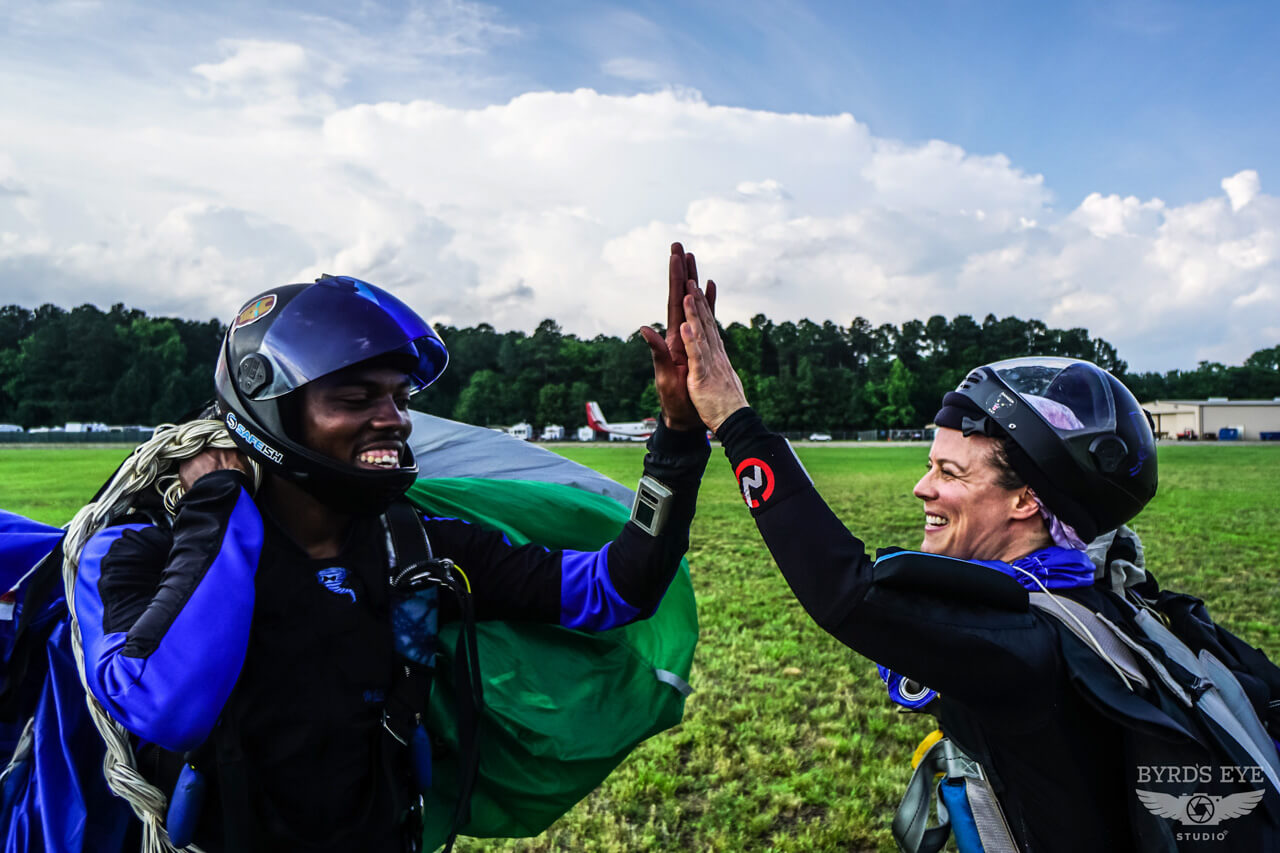
How Long Does It Take To Learn To Solo Skydive?
Is skydiving solo hard? Well, it depends. Some people progress quickly, while others take more time. The United States Parachute Association (USPA) requires a minimum of 25 skydives to obtain the A-license. Some people get licensed on their 25th jump, while others do not – ain’t no shame in that game!
Point blank: everyone learns differently and faces different obstacles or constraints – whether those be financial, time, or genuine struggle when mastering a skill in the sky. Rest assured, the investment is priceless and gifts you with newfound confidence, an incredible community, and a pretty sick hobby.
Ready to start your solo skydiving journey? We can’t wait to have you! Please (we really mean this) reach out with any further questions – your safety and comfort level is our priority! Blue skies!




